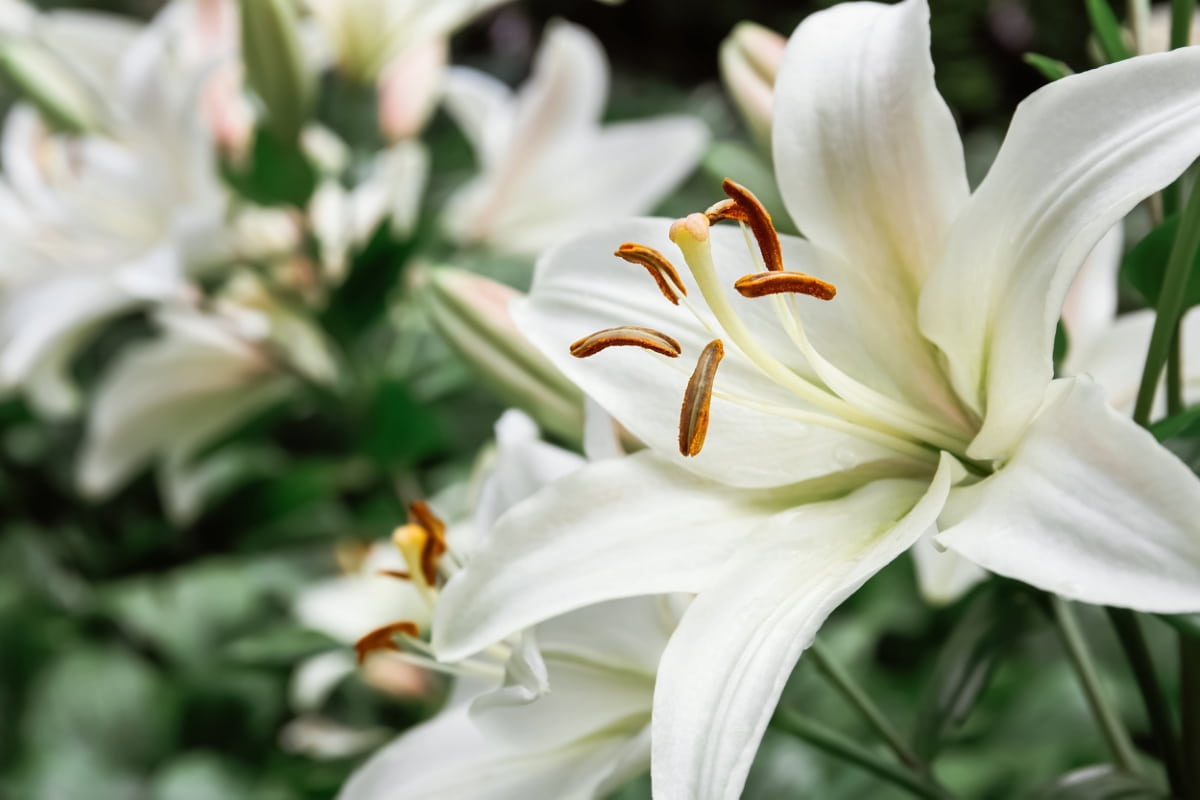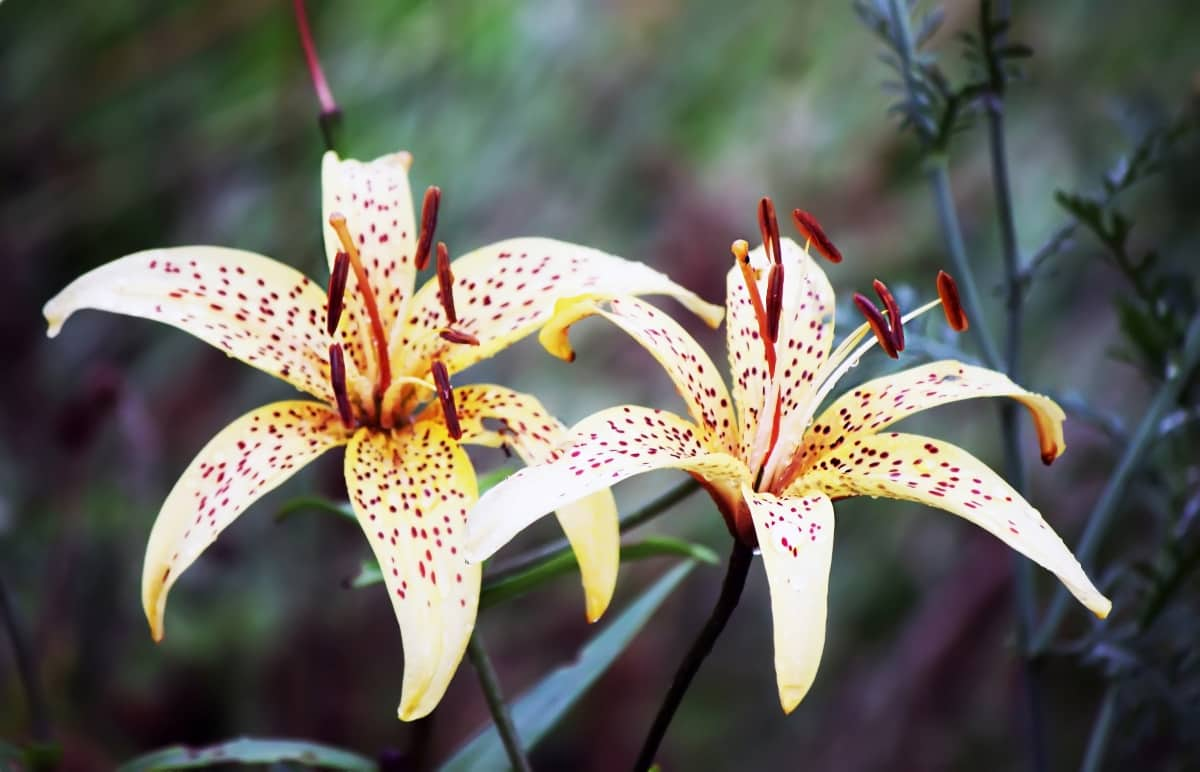Welcome to our blog post on Common Lily Plant Pests! Lilys are extraordinary garden additions with their attractive blooms and multiple varieties. Still, like any plant, they are prone to a range of common pests that can hinder their beauty and health. This blog post aims to discuss 10 of the most common lily pests, including their symptoms, treatments, prevention, and management. So, buckle up to explore the lily plants’ ten most common pests.

Important Points for Beginners to Identify and Manage Pests in Lily Plants
- Identifying the pest: The first step is identifying the pest infesting your lily plant so that you can approach it with the most effective control method.
- Regular Monitoring: Monitor your lily plants regularly for signs of pests. This will help you to identify an infestation early when it is easier to control.
- Sanitation: Remove the infected plant debris and burn them.
- Natural Control: Several natural control methods can help to manage pests. These include plant extracts, essential oils, predators, and organic insecticides.
- Chemical Control: If natural controls are ineffective, use insecticides as a last resort, and follow the label instructions and dosage carefully.
10 Common Lily Plant Damaging Pests
Aphid Pest in Lily Plant
- Damage Symptoms by Myzus persicae: Aphids feed on the plant’s sap and inject toxic saliva, giving a puckered or deformed appearance. Infested plants exhibit leaf wilting, drooping, chlorosis, and flower distortion. Aphids excrete sugary honeydew while feeding, promoting the growth of black sooty mold.
- Favorable Conditions: Aphids prefer warm temperatures and high humidity of 20-30°C and >75% humidity for survival and reproduction. They prefer plants with tender, succulent growth, such as young shoots and leaves, as they provide a nutrient-rich sap.
- Treatment, Maintenance, and Control Measures: Spray bifenthrin, cypermethrin, deltamethrin, malathion, diazinon, clothianidin, imidacloprid, acetamiprid, thiamethoxam, carbaryl, and methomyl.
Thrips Pest in Lily Plant
- Damage Symptoms by Thrips simplex: Thrips can feed on the surface of lily bulbs and leaves, causing silvering or bronzing of the outer scales and giving a mottled or speckled appearance on leaves. Infested plants show distorted growth, scarring on petals, and deformed flowers.
- Favorable Conditions: Thrips prefer warm and humid environments of 20-30°C for survival and reproduction. Dense vegetation, stressed plants, and poor air circulation provide hiding places and shelter for thrips.
- Treatment, Maintenance, and Control Measures: Spray imidacloprid, acetamiprid, malathion, chlorpyrifos, bifenthrin, cypermethrin, deltamethrin, spinosad, fenoxycarb, and pyriproxyfen. Avoid overcrowding and follow proper plant spacing.
Lily Leaf Moth Pest in Lily Plant
- Damage Symptoms by Polytela gloriosa: The moths feed on the leaves of lily plants and skeletonize them, giving the leaves a tattered or lace-like appearance. Infected plants show frass droppings, defoliation, and stunted growth.
- Favorable Conditions: Moths prefer moderate temperatures and humid climates of 15-27°C and >50% humidity for survival and reproduction. Dense plantations, poor airflow, and plant stresses provide a conducive environment for the pest.
- Treatment, Maintenance, and Control Measures: Spray bifenthrin, cypermethrin, deltamethrin, and spinosad. Spray Bt-based insecticides, such as Bacillus thuringiensis var. kurstaki (Btk), to kill the moths.
Lily Bulb Mite Pest in Lily Plant
- Damage Symptoms by Rhizoglyphus echinopus: Bulb Mite infestations can form necrotic lesions on the bulb’s surface and distorted bulbs. The affected leaves show wilting, chlorosis, reduced flowering, and stunted growth.
- Favorable Conditions: Bulb mites prefer warm and humid environments of 25-30°C and >70% humidity for survival and reproduction. They prefer sandy or loamy soil with good drainage, organic matter, and plant debris. Overcrowding and lack of airflow favor mite reproduction and spread.
- Treatment, Maintenance, and Control Measures: Spray bifenthrin, cyfluthrin, cypermethrin, deltamethrin, abamectin, spiromesifen, etoxazole, imidacloprid, and thiamethoxam. Soak the bulbs in water heated to 43°C for 30 minutes. Release predatory mites, such as Hypoaspis miles, to control the bulb mites.
In case you missed it: Common Carnation Plant Damaging Diseases: Symptoms, Treatment, Prevention, and Management

Red Spider Mite Pest in Lily Plant
- Damage Symptoms by Tetranychus urticae: Red spider mites feed on the plant’s tissue by piercing the cells and extracting sap, causing yellow or bronze spots known as stippling. The affected leaves show chlorosis, webbing, curling, wilting, and reduced plant growth.
- Favorable Conditions: Red Spider Mites prefer warm and dry weather of 21-32°C and <60% humidity for survival and reproduction. Overcrowding, plant stress, and poor air circulation provide a conducive environment for the mites.
- Treatment, Maintenance, and Control Measures: Spray abamectin, bifenthrin, bifenazate, spiromesifen, imidacloprid, and thiamethoxam. Release natural predators, such as predatory mites, ladybugs, and lacewings.
Lily Bulb Fly Pest in Lily Plant
- Damage Symptoms by Merodon equestris: The larvae feed and cause significant damage to the bulbs, leading to decay, rotting, and overall weakening of the plant. Infested plants show leaf chlorosis, curling, wilting, reduced flowering, and stunted growth.
- Favorable Conditions: Bulb flies prefer moderate temperatures and moist soils of 20-25°C for egg hatching and larval development. Higher planting density and plant debris in the soil, such as decaying plant material or weeds, provide a conducive environment for pests.
- Treatment, Maintenance, and Control Measures: Spray imidacloprid, thiamethoxam, chlorpyrifos, bifenthrin, cypermethrin, and deltamethrin. Release beneficial nematodes, such as Steinernema feltiae, to control the pest.
Beetle Pest in Lily Plant
- Damage Symptoms by Lilioceris lilii: Adult beetles primarily feed on the foliage, creating a characteristic “shot-hole” appearance. They have a voracious appetite and often skeletonize the leaves. Infested leaves show wilting, chlorosis, discoloration, and bud distortion.
- Favorable Conditions: Beetles prefer warm and moist environments of 18-30°C for reproduction and survival. Dense plantings, weeds, and tender leafy vegetation create a microclimate that favors pest development.
- Treatment, Maintenance, and Control Measures: Spray bifenthrin, cypermethrin, deltamethrin, spinosad, imidacloprid, acetamiprid, and thiamethoxam.
Leafhopper Pest in Lily Plant
- Damage Symptoms by Eupteryx spp: Leafhoppers feed on the plant’s sap by piercing the leaves, excreting sticky honeydew that promotes sooty mold. Infested plants show stippling, chlorosis, wilting, curling, distortion, and premature leaf drop.
- Favorable Conditions: Leafhoppers prefer warm and humid environments of 20-30°C and >50% humidity for survival and reproduction. High plant density, weeds, plant stress, and poor airflow provide a conducive environment for the pest.
- Treatment, Maintenance, and Control Measures: Spray bifenthrin, cypermethrin, deltamethrin, imidacloprid, acetamiprid, thiamethoxam, malathion, chlorpyrifos, carbaryl, and methomyl.
Lily Eelworm Pest in Lily Plant
- Damage Symptoms by Ditylenchus dipsaci: Eelworms induce the formation of galls or swellings on bulbs, stems, and leaves. Infected plants show leaf chlorosis, wilting, distorted bulbs, reduced flowering, and stunted growth.
- Favorable Conditions: Eelworms prefer moderate temperatures and moist soils of 15-25°C for reproduction and survival. Vegetative propagation, waterlogging, overcrowding, plant stress, and poor airflow create a conducive environment for the pest.
- Treatment, Maintenance, and Control Measures: Spray abamectin, oxamyl, or fenamiphos. Perform soil fumigation with chemicals such as methyl bromide or metam sodium. Use biocontrol agents like Bacillus firmus, Paecilomyces, and Trichoderma spp.
Gall Midge Pest in Lily Plant
- Damage Symptoms by Contarinia lilii: The characteristic symptom of pest infestation is the formation of galls on leaves, stems, and flowers. Infected plants show leaf wilting, chlorosis, curling, distortion, stunted growth, and reduced flower and seed production.
- Favorable Conditions: Gall midges prefer moderate temperatures and humid environments of 18-25°C for reproduction and survival. Overhead irrigation, dense foliage, plant stress, and poor airflow create a conducive environment for the pest.
- Treatment, Maintenance, and Control Measures: Spray imidacloprid, bifenthrin, cypermethrin, deltamethrin, malathion, and chlorpyrifos. Spray neem oil as it contains insecticidal plant extracts.
In case you missed it: Common Jasmine Plant Damaging Diseases: Symptoms, Treatment, Prevention, and Management

Conclusion
Common lily plant pests include aphids, thrips, moths, bulb mites, red spider mites, bulb flies, beetles, leafhoppers, eelworms, and gall midges. By identifying the pest, inspecting plants regularly, and using natural control methods, you can help to keep your lily plants healthy and beautiful.
- Deworming Schedule for Dogs/Puppies: A Beginners Guide
- How to Prevent and Control Parasites in Goats
- Beneficial Insects in Pest Management
- Natural Solutions for Pest Control in Flower Gardens
- Types of Fungicides Used in Agriculture
- Common Issues in the Fruit Development Stage of Pomegranate Farming
- Fruit Development Issues in Papaya: Easy Solutions and Treatment
- Soil-Borne Diseases and How to Protect Your Plants
- Practices to Prevent Disease Spread in the Garden